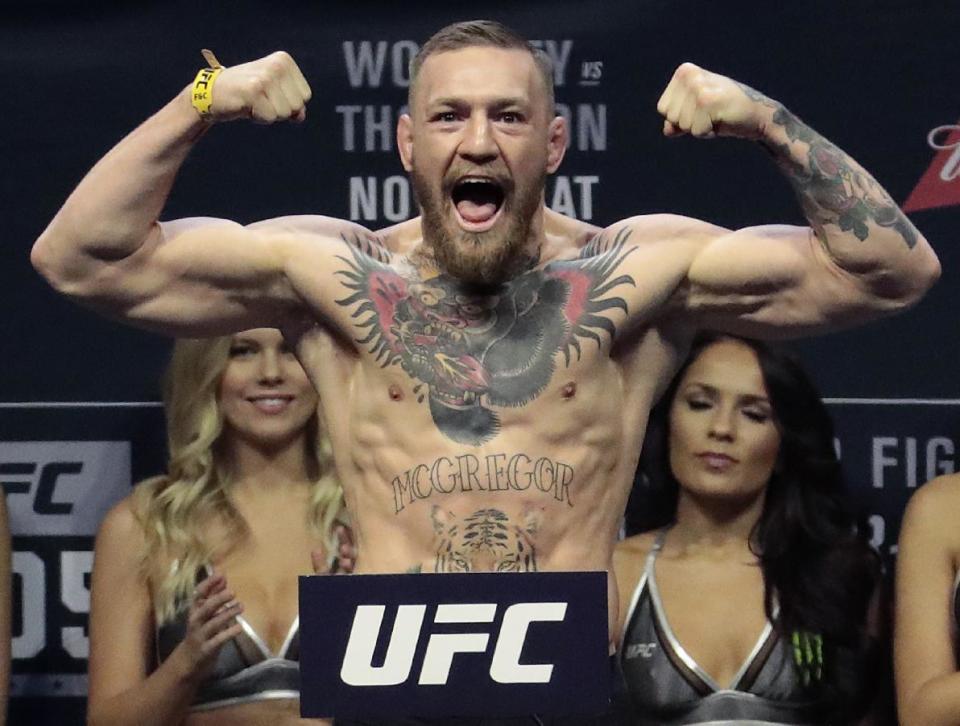Meet the company powering video for the UFC, NFL, NBA
In July, the Ultimate Fighting Championship (UFC) became the first sports league to stream a live pay-per-view event in 4K video.
The event was UFC 200, and the super-high-resolution 4K (meaning 4,000 pixels) video was available in the US to DirecTV subscribers with any 4K television. In Canada, it was available to UFC Fight Pass subscribers with a 2015 or 2016 Sony Ultra HD television, thanks to NeuLion, which also powers streaming video for the NFL (Game Pass), NBA (League Pass) and others.
On Saturday, NeuLion will stream live 4K video for the second time, but at a much bigger event: UFC 205, the first mixed martial arts fight in New York after an almost 20-year ban. (Governor George Pataki banned the sport in 1997; New York lifted the ban in March.) The fight is between current UFC lightweight champion Eddie Alvarez and the sport’s biggest star, Conor McGregor.
And this time NeuLion will be streaming to a much bigger audience. NeuLion’s 4K stream of UFC 205 will be available everywhere globally (through UFC Fight Pass) except China. (DirecTV will also offer a 4K stream to its subscribers in the US.) If the Canada-only stream at UFC 200 was a trial run, UFC 205 is like a coming-out party for NeuLion, which is a key player in digital video but operates mostly behind the scenes.

NeuLion was the longtime streaming partner of the NHL and all of its digital apps until August of last year, when the NHL announced a comprehensive new partnership with MLB Advanced Media (nicknamed BAM) that effectively dumped NeuLion, whose chairman of the board is Charles Wang, owner of the New York Islanders. (Awkward, right?) The company’s stock tanked nearly 50%, and new CEO Roy Reichbach acknowledges, “It was a setback. We had to refocus on doing what we do best, going out and rebuilding our business, working with customers like the NFL, NBA, UFC, Univision, Rogers, and many others.”
The NHL’s deal with MLBAM gave the league a 9% ownership stake in BAM Tech, which MLBAM spun off into its own independent company this summer. Disney, too, recently spent $1 billion to get a 33% stake in BAM Tech; the rest is owned by baseball’s 30 clubs. In its fourth-quarter earnings report this month, Disney CEO Bob Iger repeatedly pointed to BAM Tech as a key asset for Disney’s future.
And so, BAM Tech looms large as a competitor to NeuLion and other streaming providers like Brightcove, Ooyala and Imagine Communications. But losing the NHL hardly killed NeuLion’s business. While BAM Tech gets a lot of the press these days, Univision chose NeuLion over MLBAM to power its streaming service UVideos, and NeuLion has streaming deals with major properties like the NFL, which is a lot bigger than the NHL.
NeuLion’s technology streams every NFL game outside the US. In the States, it’s a different story because of complicated entrenched broadcast agreements. Asked about that tension, Reichbach says the NFL, “takes two different views. One is the domestic view and one is the international view … It’s about maximizing their revenue. And then deciding when they’re going to take the chances to move forward. Everyone knows that streaming digitally is where things are going. A year or two ago it was a nice-to-have, now it’s a necessity for someone who has content. So, they’re going to learn to monetize it the way we do. It’s just that in certain instances, because of rights deals in existence, they can’t move forward as quickly as they might like.”
Once the NFL is ready to move forward, NeuLion will be there, and has a major advantage as its partner abroad. For now, NeuLion is focused on adding new partners and signing new streaming deals, and not all of them in sports: The company just announced an agreement with Nokia to provide the software for the Nokia OZO, a multi-lens virtual reality camera for shooting 360-degree video.
Cord-cutting is rising so quickly that no single video provider will be the only winner; many will benefit. There are signs that many technology companies can make gains: ESPN, suffering from cable subscriber losses, has already signed over-the-top streaming deals with Sling TV (DISH), PlayStation Vue (Sony), AT&T Direct and Hulu to let those entities stream ESPN channels to cord-cutters for a monthly fee.
It’s all part and parcel of a gradual, but quickening, consumption shift. “Older folks like myself are used to getting media content pushed to us the way the broadcaster wanted to,” says Reichbach. “Now young people consume content the way they want to, where they want, on the device they want, and when they want. That tension will continue to drive most businesses that are content holders or rights holders to the digital side.”
—
Daniel Roberts is a writer at Yahoo Finance, covering sports business and technology. Follow him on Twitter at @readDanwrite. Sportsbook is our recurring sports-business video series.
Read more:
Hulu bundle is latest sign of Disney and Fox catering to cord-cutters
Disney’s hopes for ESPN rest on one critical investment
